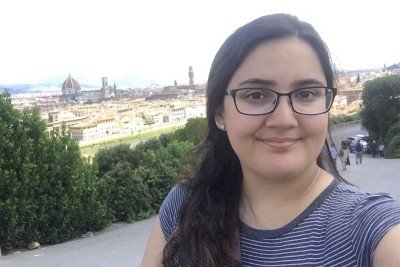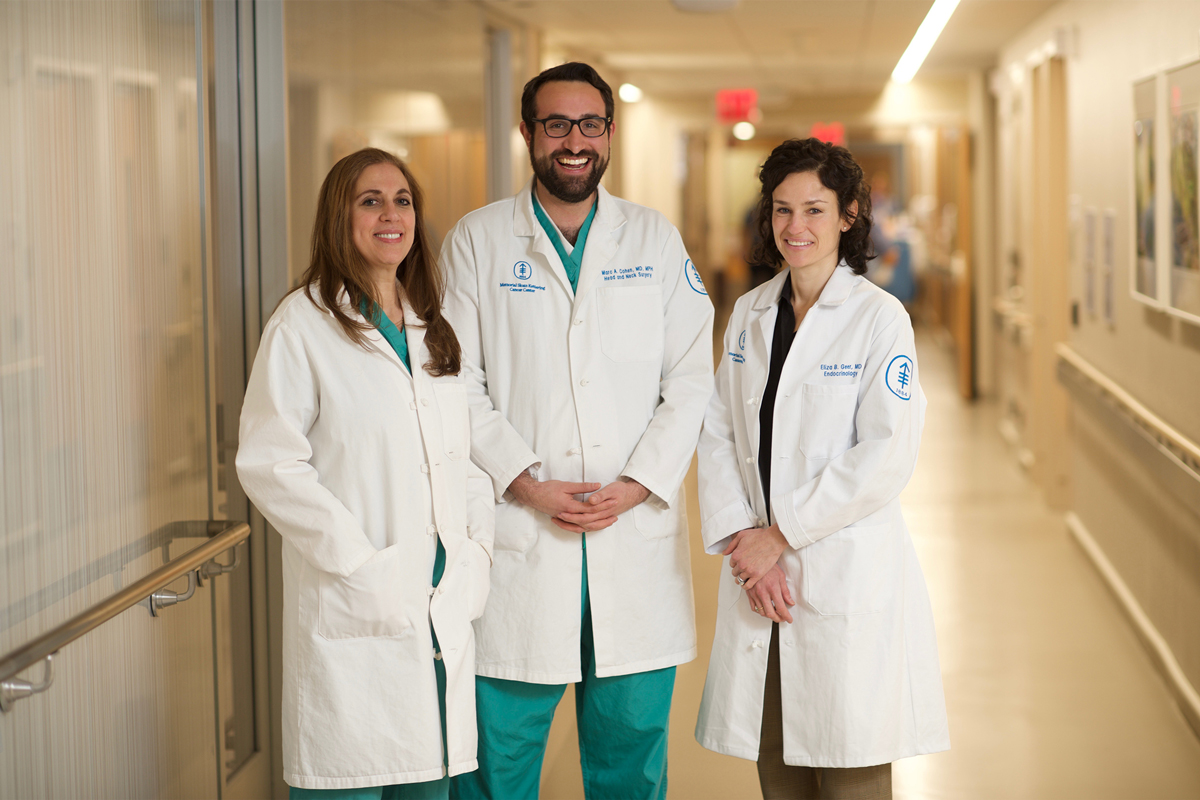Martina's Story
When Syracuse University student Martina learned she had a tumor at the base of her skull in 2016, she and her family sought out the Multidisciplinary Pituitary and Skull Base Tumor Center at Memorial Sloan Kettering. At MSK, skull base surgeons were able to remove the tumor through her nose, and within months Martina was back in school.

In September 2016, Martina Morris had just returned to Syracuse University. The 18-year-old was starting her sophomore year as a preveterinary student. Then she became seriously ill with painful headaches and severe fatigue.
Martina Morris: My mom was concerned. On Labor Day she called me and said, “I have a bad feeling about this and need to get you checked out.”
Viviane Tabar, neurosurgeon: A lot of headaches are caused by stress and are not associated with serious brain conditions. But Martina had also been complaining of fatigue, weight gain, and changes in her period. All of these pointed to a hormonal issue. Luckily, Martina’s mom is very sharp. When she heard the symptoms, she took her to a local hospital. They did a scan and saw that Martina had a growth that was blocking spinal fluid from circulating properly.
Martina: I could have never imagined it for myself. I just wanted to understand what we had to do. How long was the surgery? What was the recovery time? The thought of taking a semester off didn’t even occur to me.
Dr. Tabar: For the area of the brain where Martina’s tumor was, a diameter of one centimeter is considered large. Hers was almost four centimeters.
Making a Plan
The hospital in upstate New York advised putting a shunt (a type of tube) in Martina’s brain to reroute the fluid. But that wouldn’t take care of the tumor, which was located at the base of her skull and pressing against the nerves of her eyes. Martina and her family didn’t have an exact diagnosis yet, but they decided to learn more about the tumor before making their next move. They soon found out that Memorial Sloan Kettering has experts in skull base surgery.
Marc Cohen, head and neck surgeon: We saw Martina in our Multidisciplinary Pituitary and Skull Base Tumor Center. Patients will come in and see Dr. Tabar, our neuroendocrinologist Eliza Geer, and myself in one visit. The ability of all three doctors to see our patients at the same time allows us to come up with a comprehensive plan at the initial visit. Martina looked unwell at that first visit, but even then you could tell she was a special young woman. We talked about college sports; she is a very big fan.
Dr. Tabar: When we saw Martina, we thought she had a craniopharyngioma. It is a very unusual tumor and is not a cancer in the common sense of the word. But it is still a tumor, capable of growing and causing damage. Most craniopharyngiomas are filled with fluid. They usually grow above the pituitary gland, where the eye nerves are. They also tend to attach to the hypothalamus, a very important center in the brain that controls many vital functions.
At Memorial Sloan Kettering, Martina learned that Drs. Cohen and Tabar could remove the tumor through her nose. This type of transnasal procedure is safer and easier to recover from than one that goes through the skull. Also, taking out the tumor would get rid of the fluid backup in her brain so she wouldn’t need a permanent shunt. Dr. Tabar’s nurse, Jenna Longo, arranged all of the tests Martina needed before surgery and provided support to the family.
Martina: Dr. Cohen and Dr. Tabar gave me the rundown of the surgery I would need. I felt reassured, and I knew my mom felt comfortable, which was enough for me.
Dr. Tabar: Martina struck me as a very bright, very positive young person. When you have to break news of a serious surgery to an 18-year-old, you have to be very careful about how you do it. But she wasn’t afraid. She was the one encouraging us to just get it done! I think when people know that they are at a place where there is expertise and true collaboration, it increases their confidence and comfort.
Tag-Team Effort
Less than a week later, Martina and her mother returned to MSK for surgery.
Dr. Cohen: Dr. Tabar and I are partners in the operating room. We are able to remove tumors through the nose with an endoscope, an instrument used to examine inside the body. Otherwise we’d need to use large external incisions, and there’d be a much longer recovery period.
Dr. Tabar: We’re one of the few places in the world that does procedures like Martina’s in an operating room equipped with an MRI machine. This allows us to see in real time how much of the tumor we have taken out and if there is any left that we have not seen. We try to do a scan near the end of the procedure. That way we can come out fully confident that we’ve done everything we need to do, and we can share with the patient and their family exactly what was done. It also saves the patient from having to get another MRI after surgery because we’ve done it while they’re asleep. That was an important part of the care we wanted to give Martina.
Drs. Cohen and Tabar took out the tumor and sent a sample to MSK neuropathologist Marc Rosenblum. He confirmed that it was a craniopharyngioma while the surgery was still going on. Dr. Tabar was able to tell Martina’s family immediately afterward.
Martina: When I got out of surgery, I said to my mom, “Are they going to take me in yet?” I didn’t even remember them putting me under.
Dr. Tabar: The procedure went very well. We were thrilled to see Martina wake up so quickly despite several hours of anesthesia. Since the tumor was removed completely, she does not need any more treatment for it. She will only need to be monitored with an MRI once a year or so. She stayed in the hospital for a couple of days and came back to follow up with all of us, especially Dr. Geer.

Life after Surgery
Dr. Geer: My role was to manage Martina’s pituitary hormone levels. With this type of tumor, people can become hypopituitary. That means their pituitary gland doesn’t make the hormones it needs to and also doesn’t balance salt and water properly. We needed to replace her hormones. It can take time to get people on the right doses so they’re feeling good. But they typically do very well and are able to function completely normally on the replacements.
Martina: Dr. Geer was already familiar with everything. She’s there if I need anything or have a question. The only new thing I had to adjust to was taking medication.
A year after surgery, Martina is now back at school and thriving.
Martina: I took a semester off but went back to school in the spring. I’m an active member of my professional fraternity. I continue to conduct research in a biology lab on campus. My goals are the same: I wanted to be a vet before the surgery, and I’m still in school to become one. My advice to others who may have to go through something similar to my experience is that truly everything else can wait. Without your health, nothing else can be accomplished. With the right team of doctors and support from your family, the experience can be much less daunting.



